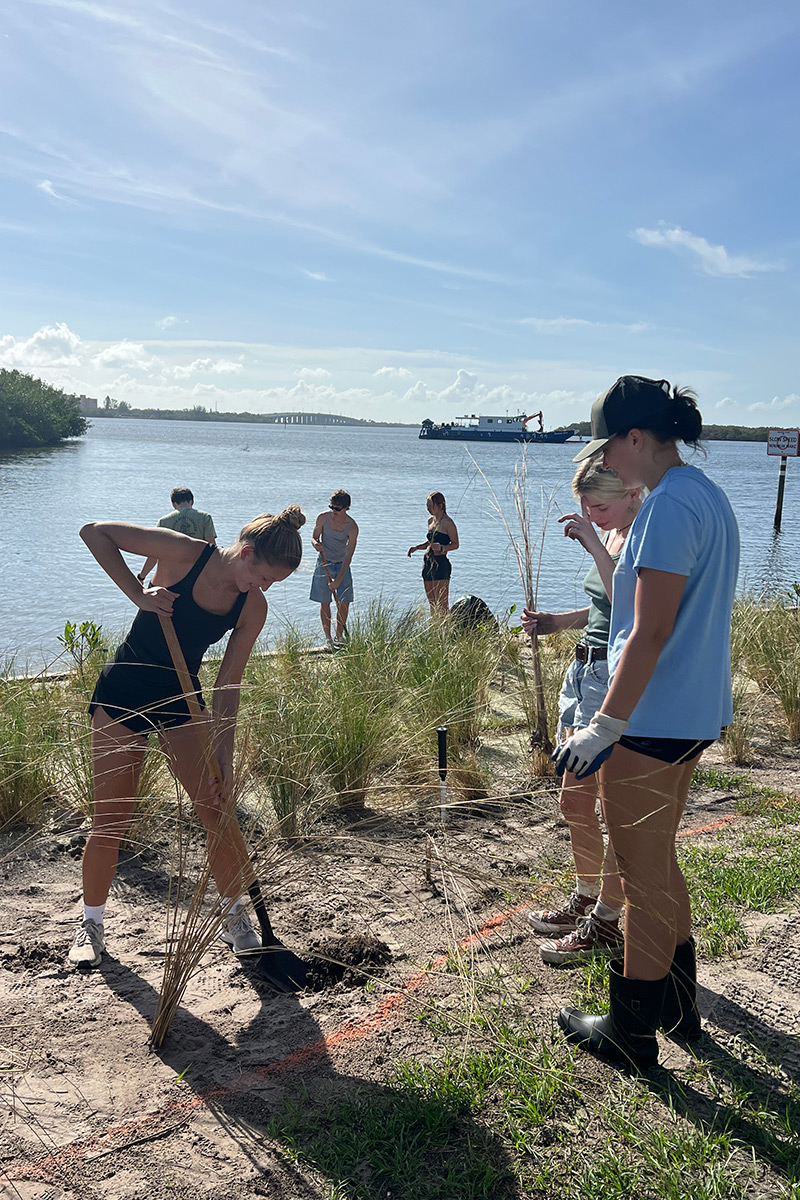In 2024, Eckerd faculty, staff, students and partners joined together to replace 400 feet of old seawall with a living shoreline.
The effort successfully replaced a long portion of the seawall near the Omega residence hall with a gradually sloping coastline and tiered native plantings.
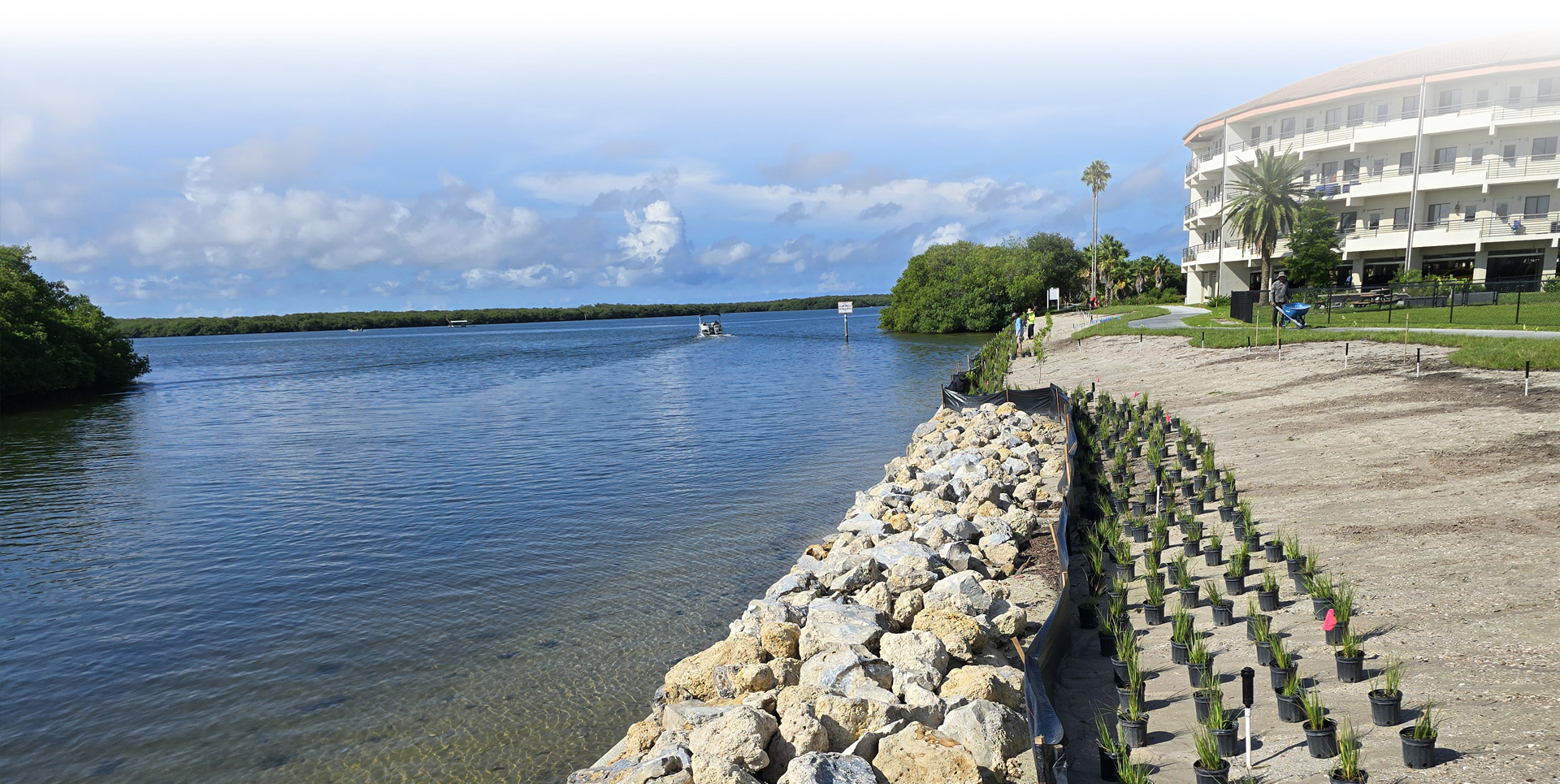
Better for the local aquatic environment
Better for Tampa Bay
Students and community volunteers populated the area with native grasses and mangrove saplings. As part of the living shoreline work, we planted:
HOURS OF LABOR WERE CONTRIBUTED TO THE PROJECT BY STUDENT VOLUNTEERS
Photo above by Kaitlyn Willgohs ’21; other plant photos by Elena Matviichuk/GLF, David J. Stang, Sandra Richard, thesix
In years to come, this area will grow into a natural-looking shoreline that improves water quality by trapping sediments and filtering out excessive nutrients like nitrogen and phosphorus.
In addition, many coastal species of fish, crustacean and mollusk will eventually make the living shoreline their home. These new habitats, in turn, should attract wading birds and marine mammals.


Drag the blue bar sideways to enjoy a comparison of photographs from before and after construction.
Better for campus resiliency
Living shorelines are more resilient against storms than seawalls and other forms of “coastal hardening.”

No living shoreline
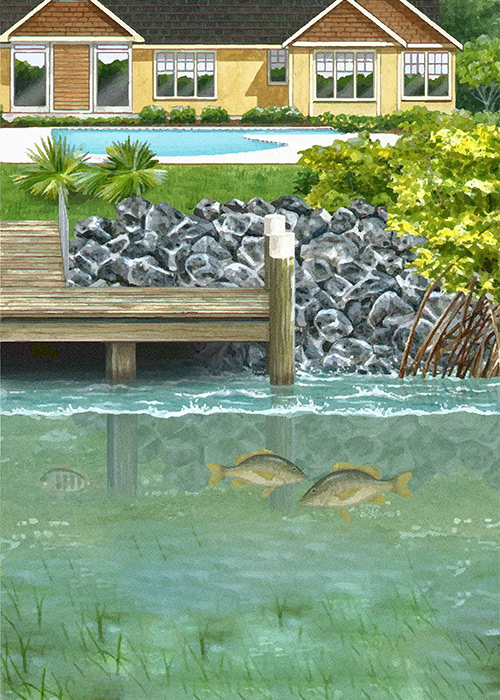
Partial living shoreline

Living shoreline
Eckerd’s new shoreline will reduce erosion and protect our campus from wave action and sea level rise. In parallel, the mangroves we planted will build up soil over time, creating a natural barrier to waves. The 15 feet of marsh where we planted the marsh grasses will absorb 50% of incoming wave energy!
As part of the construction process, we also raised our sidewalks in the area—further protecting our campus from storm surge, rain events and high tides.
Shoreline illustrations courtesy Pinellas County
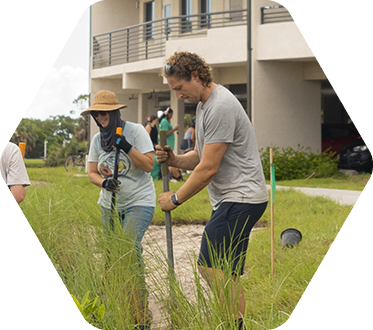
In his own words
“We placed riprap, cordgrasses and mangroves to combat wave energy. With a campus this close to sea level, it’s important to break up the energy of surging water during storms. Taking out the seawall and improving drainage also allows water that does surge up to recede without being trapped.”
—Evan Bollier ’11, Director of Sustainability
Better for education
The new shoreline now offers opportunities for students to observe a growing technique—a way of addressing seawalls and storm surge—that is gaining traction and is better for the overall ecosystem.
- Students in environmental studies and biology classes will have a “living laboratory” right on campus.
- Classes focused on wetlands and sustainable development are incorporating the site into discussions about challenges and possibilities for future development.
- As the shoreline grows, it will provide additional educational opportunities for students doing acoustics research, performing ecological assessments of new species in the area, and more!
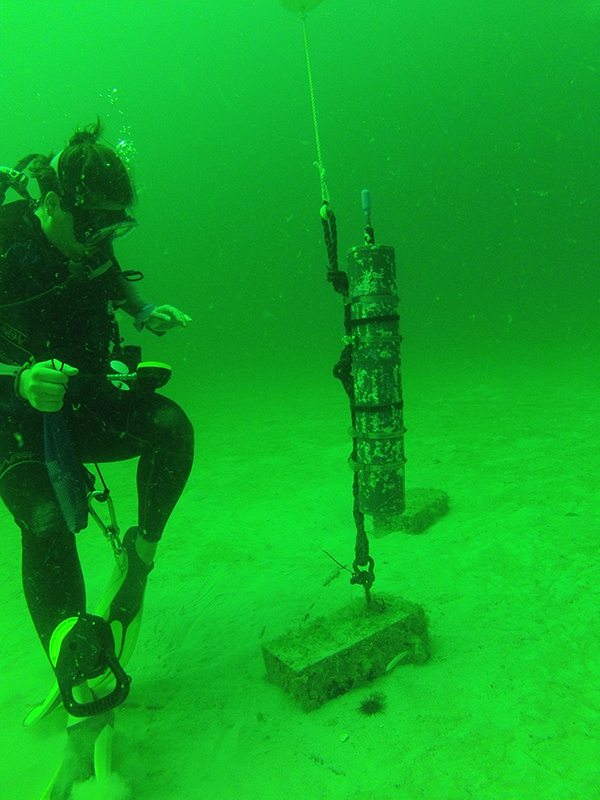
Autonomous recorders are used for field studies for acoustics research at Eckerd. Photo: Kara Wall
Funding and partners
The project began in 2021 with more than $150,000 in investment from the Tampa Bay Environmental Restoration Fund stewarded by the Tampa Bay Estuary Program. An additional amount of $350,000 came from the State of Florida. We are grateful to our partners who helped us complete the conversion of 200 feet of seawall:





